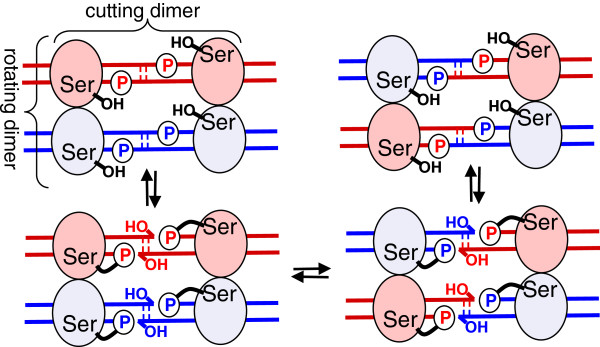Figure 2.

Strand exchange by serine recombinases. The cleavage, exchange, and religation of DNA strands occurs within a tetramer. Attack of the conserved serines displaces the 3′ hydroxyl groups, creating 2nt 3′ overhangs and 5′ phosphoserine protein-DNA linkages. Two subunits then rotate 180° to realign the broken ends, which are then religated to new partners by attack of the free 3′ hydroxyls on the phosphoserine linkages. A pair of subunits that binds and cuts the same initial duplex is termed a cutting dimer, and a pair that rotates together is termed a rotating dimer (see brackets in first panel). The full binding site for each cutting dimer, termed a “crossover site”, is an inverted repeat of two specific “half sites”, one on each side of the central dinucleotide.
